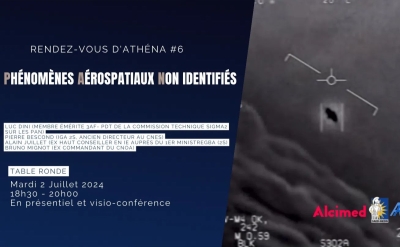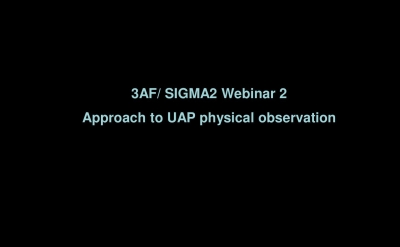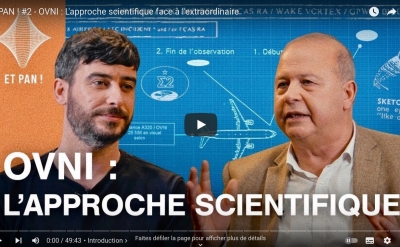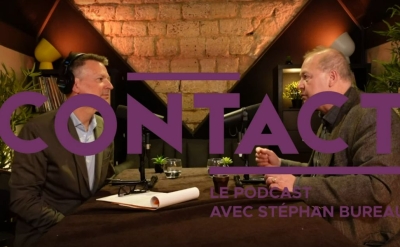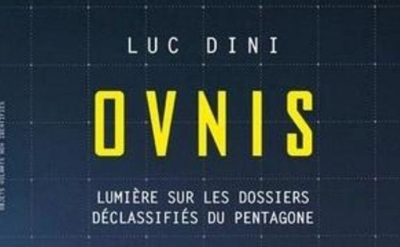Presentation
Chairman's name :
Luc Dini
Mail contact :
sigma@3af.fr
The phenomenon of UAPs (Unidentified Aerospace Phenomena) is not new: aeronautical cases (in flight) and cases on the ground (traces and sightings) have been reported since the 2nd World War, and even well before (cases reported in the British Ministry of Defence report as early as 1918 in the UK and 1607 in Central Europe). In France, a first wave of cases was recorded in the early 1950s, prompting the creation of GEIPAN at CNES in 1977. These phenomena present a variety of observable characteristics (kinematics, electromagnetics, optics, radiation, mechanical effects on the ground, etc.) that are unexplained by known physics.
Their reality is indisputable, even if hoaxes do exist and have been demonstrated. Their natural or artificial origin is an open question, depending on the case, due to poorly understood atmospheric or ionospheric luminous and electromagnetic phenomena, as well as unpredictable electromagnetic and, above all, kinematic behaviour. These strange behaviours defy the laws of physics, particularly mechanics, which poses a problem for our means of observation to make systematic recordings.
Because of the exceptional nature of these aerospace phenomena and their scientific complexity, which cuts across many aerospace disciplines, 3AF's Technical Commission, initially called PAN, then SIGMA, was created in 2008.
In April 2013, the SIGMA Commission's mandate was refocused on the scientific and technical analysis of unexplained "D" cases (according to GEIPAN terminology): SIGMA2 thus succeeds SIGMA.
Areas of activity :
Study of unidentified aeronautical phenomena.
Activities :
Regular meetings.
Roadmap :
Its work is parallel and coordinated with that of GEIPAN in France and of institutional and non-institutional organizations abroad (e.g. Chilean CEFAA, NARCAP US, SCU US, etc.): Chilean CEFAA , US NARCAP, US SCU,...) but also with research laboratories (CNRS for example, a lightning research laboratory with which we have signed an agreement) or schools such as Ecole 42 (radar data processing, Artificial Intelligence applied to image processing). The technical analysis of unexplained cases follows on from field investigations carried out solely by institutional services (this is their role in France, not that of 3AF) within a perimeter limited to the near-earth and atmospheric environment, up to the ionosphere, and even outer space for orbiting bodies captured or subject to the Earth's gravitational pull.
To carry out its work, the SIGMA2 Technical Commission brings together a wide range of expertise (engineers from industry or the public sector, specialists in air defense, radar, electromagnetism, retired specialists from DGA, CNES, astronauts, retired officers, pilots, analysts, astrophysicists, doctors, etc.).fense, radar, electromagnetism, retired DGA and CNES specialists, astronauts, retired officers, pilots, analysts, astrophysicists, doctors...). Among these diverse and high quality skills, we can mention Engineer General (2s) Pierre Bescond, former director of CNES, member of Cometa, Chairman of the GEIPAN Steering Committee (COPEIPAN), Engineer Generalral (2S) Jean-François Clervoy, test flight engineer and ESA astronaut, Dr Paul Kuentzmann (3AF/ Sigma2 expert, Senior Scientific Advisor to the Chairman of ONERA), Dr François Louange (image processing expert, 3AF/ SIGMA2 and GEIPAN expert). Since 2013, these skills have been further enriched by additional expertise.
The SIGMA2 work plan was built around 5 axes: environment and documentary base, contacts, case selection, physical elements, observation (means of measuring and collecting data on NAPs).
Several communications have been made through the 3AF newsletter since 2013 to explain the mandate and logic of the work, theoretical reflections on the physics ofelectromagnetism and gravitation, then the meeting with the Chilean CEFAA at the end of 2014, the SIGMA2 database (early 2016), the Chilean Cougar case (2017)...
True to its commitment to a technical and scientific approach, but also to transparency, SIGMA2 has also communicated with the scientific and ufology community through the media and external events:
- Participation in the CAIPAN seminar organized by CNES/GEIPAN in July 2014 ;
- Contribution to the Science et Vie special issue of 07/13/2016 on exobiology and exoplanet research (part article GEIPAN- FRIPON- SIGMA2);
- Interview by Jean-Pierre Troadec in NEXUS in November 2016;
- Participation in the international symposium on lightning in 2017, organized by the CNRS Lightning Research Laboratory and the Pegasus research unit.
SIGMA2 also produced an initial progress report at the end of 2015, circulated within 3AF (to 3AF members) in 2016. A summarized version of this summary report has been made freely available on the 3AF website for the benefit of the entire community interested in NAPs. This report provided an initial overview of all the areas of work, from the geographical and historical background to NAP research, to the physics of the phenomena and the means of observation.
A number of cases were examined in greater depth, both from the GEIPAN database and from foreign data, such as the Puerto Rico Aquadilla case.
In 2017, SIGMA2 received data from the Chilean CEFAA on the Chilean "Cougar" PAN case, which had been the subject of publications on the internet. These new radar data complemented the Infrared video initially published by CEFAA, but which gave truncated information on the sighting and was therefore difficult to use. These data enabled SIGMA2 experts to present their technical viewpoint on the subject, and to conclude that the Cougar had observed an AIRBUS A340. This information was published first in the form of a report in French and English, freely available on the 3AF website, and then in the 3AF Newsletter N°27 of September/October 2017, also available on the internet.
Recent publications on the internet made on December 16, 2018 on the AATIP (Advanced Air Threat Investigation Program) research program, have raised many questions about NAP research towards 3AF/SIGMA2. It has therefore been decided to publish an analysis of the SIGMA2 Commission in French and English versions, on the 3AF website to give our point of view on this program, or what we know about it.
Beyond current events, SIGMA2 work continues on the various research themes. That's why we're working on a more comprehensive version of the progress report. That's why we've decided, to echo the American publications but also in keeping with GEIPAN's transparency and information initiative, to put the SIGMA2 2015 Progress Report online, in French and English.
As always, we strive to answer the questions we receive, through our publications, which are attentive to scientific and technical questions about NAPs.
On the other hand, the technical nature of SIGMA2's work totally excludes philosophical or societal reflections that may be of interest to other fields of expertise outside 3AF/SIGMA2.






